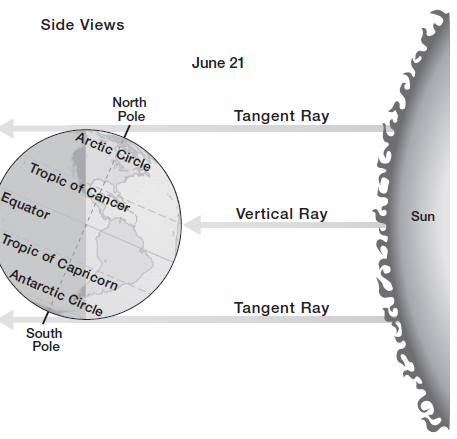What can you deduce about the activation energy of a reaction that takes billions of years to go to completion? How about a reaction that takes only fractions of a second?
A. The activation energy of both these reactions must be very low.
B. The slow reaction must have a low activation energy, while the fast reaction must have a high activation energy.
C. The slow reaction must have a high activation energy, while the fast reaction must have a low activation energy.
D. The activation energy of both these reactions must be very high.
Answer: C
You might also like to view...
Using the diagram provided, draw in and label the following as they would appear on the December solstice. You are encouraged to use a straight edge and protractor to increase the accuracy of your diagram.

Figure 9-2: Earth–Sun relations on June solstice.
1. North and South Poles
2. Equator
3. Tropic of Cancer
4. Tropic of Capricorn
5. Circle of illumination
6. Arctic Circle
7. Antarctic Circle
Using arrows to represent incoming sunlight, show the latitudes of the following:
8. Vertical rays of the Sun
9. Tangent rays of the Sun
Perched aquifer or perched water table can form when:
a. the water table of an aquifer rises b. the vadose zone is filled with water c. an aquitard creates localized zone of saturation d. both b and c
The Andes Mountains in South America are formed by ________
A) back-arc contraction B) continental collision C) subduction D) sea floor spreading
Following the wind dispersal of seeds, a plant becomes established in a new environment. This is an example of
a. artificial selection. b. habitat selection. c. uniform distribution. d. habitat use.